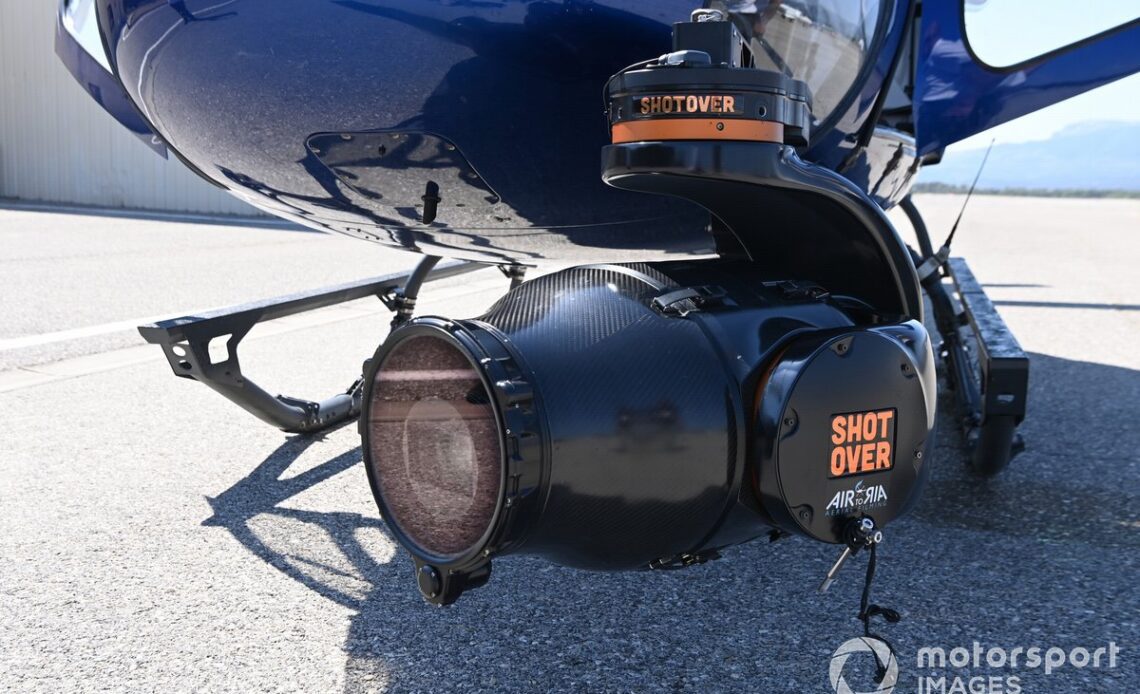First free practice of the French Grand Prix has just ended when we get invited to Paul Ricard’s airport. The man we’re meeting is Belgian Lieven Hermans, who started working as an aerial camera operator for Formula 1 in 2007.
In one of the hangars sits a helicopter with an impressive camera system mounted underneath. Next to the pilot seat, the other front seat inside the cockpit has been modified to accommodate a large controller containing a joystick and a respectable number of buttons and switches, which Hermans uses to operate the Shotover F1 camera, which he can monitor on the screen in front of him.
Hermans had been working as an aerial cameraman for several years until he ended up in Formula 1, more or less by coincidence. “I’ve always had a passion for video and helicopters,” Hermans tells Autosport. “Helicopters always seemed like something that was out of reach until I found out that I could bring my passions for the camera and helicopters together in aerial shooting.
“Before I started in F1, a colleague of mine did the Formula 1 races. At the time it was about five, six or seven races a year, which Formula 1 produced themselves. All other races were still handled by local TV stations.
“I replaced my colleague once, followed by a second time, and before I knew it, I was the regular aerial camera operator for F1. The number of races then quickly increased to around thirteen per season, and has only grown ever since.”
The Shotover F1 camera, which is operated by Lieven Hermans, Aerial Camera Operator for F1
Photo by: Mark Sutton / Motorsport Images
Gone are the days of helicopters cameras just chasing the leaders around, though. In Hermans’ hands, F1’s aerial camera has played an instrumental part in making the broadcast more dynamic and bringing the fans – literally – closer to the action.
“In the past the aerial camera was actually only used to follow the drivers at the front,” Hermans says. “You stayed on top of them like a personal bodyguard, so as not to miss an important moment in the race.
“But we have now shown that you can do much more. You can make shots that are much more dynamic shots by flying lower and playing with the foreground and background, bringing even more speed to the whole thing. And that is how we improved year after year. The images we manage to produce now are, in my opinion, much better compared to what was done fourteen years ago.”
Working with a rotating cast of pilots
For Hermans the Grand…
Click Here to Read the Full Original Article at Autosport.com – Formula 1 – Stories…

